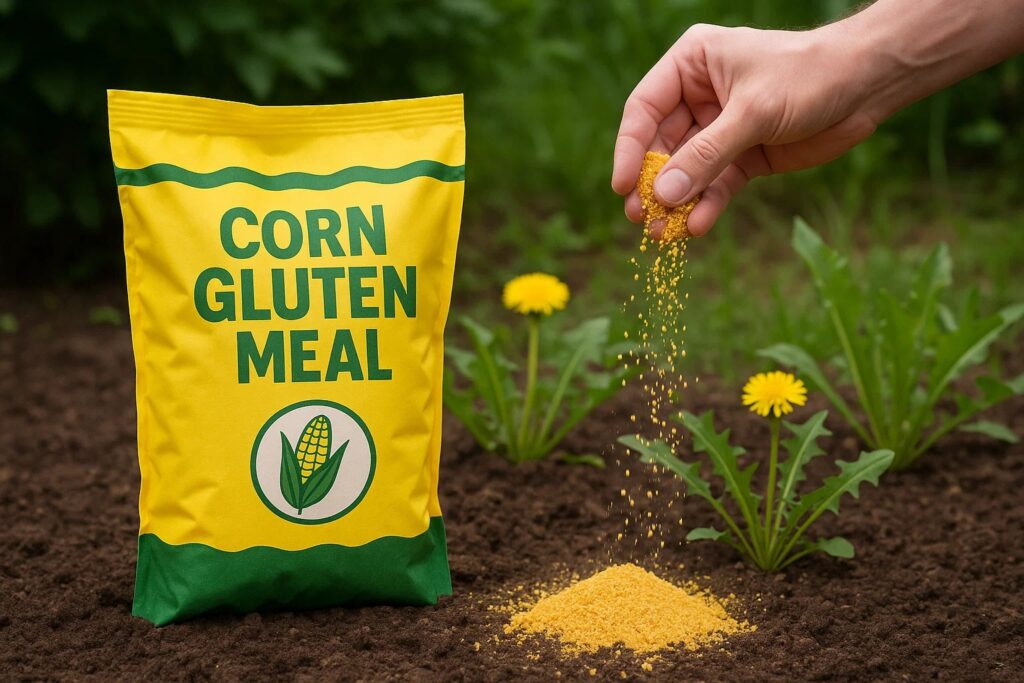You’re watering, mowing, and doing everything right, but somehow weeds still pop up like clockwork. Sound familiar? Most people assume the only way to win the war on weeds is to douse their lawn with chemicals. But what if there was a way to keep your yard looking great without resorting to harsh products?
Enter corn gluten meal. It’s been showing up more and more in organic gardening circles and lawn care forums, often recommended as a safe way to prevent weeds from ever taking hold. But does it actually work—or is it just another overhyped garden product?
Let’s take a closer look at what corn gluten meal does, how to use it, and whether it truly delivers on its promise.

Corn Gluten Meal: Not Just for Animal Feed
Originally developed as a byproduct from corn processing, corn gluten meal (CGM) has long been used as a protein supplement in animal feed. It’s yellow, powdery, and loaded with nitrogen. But in the late 1980s, researchers at Iowa State University noticed something interesting: CGM seemed to stop weed seeds from developing roots.
This unexpected discovery turned CGM into a favorite among organic gardeners looking for a way to handle weeds without using synthetic chemicals.
So, How Does It Suppress Weeds?
Here’s where it gets a bit technical—but stay with me.
CGM works as a pre-emergent weed inhibitor. That means it prevents weed seeds from becoming full-grown plants. When you apply it to your lawn, it forms a barrier at the soil level. As seeds begin to germinate, they sprout—but then fail to form roots. No roots, no plant.
It’s important to understand that CGM won’t get rid of weeds that are already growing. If you can see the weeds, it’s too late—this product is all about prevention.
Which Weeds Can Corn Gluten Meal Control?
Corn gluten meal is most helpful for controlling weeds that spread by seed, including:
- Dandelions
- Crabgrass
- Chickweed
- Foxtail
- Lamb’s quarters
- Clover
- Plantain
It won’t do much for perennial weeds or those that spread through rhizomes or runners. If your yard is full of creeping weeds like ground ivy, you’ll need a different strategy.
What Makes It a Favorite Among Organic Lawn Enthusiasts?
Beyond weed control, corn gluten meal has several other benefits that explain its rise in popularity.
1. It’s Safe for Kids and Pets
You don’t have to rope off your lawn after application. CGM is non-toxic and doesn’t pose the same risks as traditional herbicides. This makes it ideal for homes with small children or curious dogs.
2. It Also Feeds Your Grass
Most corn gluten meal products contain around 9–10% nitrogen, which gives your lawn a nice green-up without the risk of over-fertilizing. It feeds slowly over time and contributes to overall turf health.
3. No Chemical Runoff
Unlike synthetic weed killers, CGM won’t pollute nearby waterways. It’s a smart choice for anyone trying to reduce their environmental impact.
How to Use Corn Gluten Meal for Weed Prevention
If you want to give it a try, there are a few things to get right.
Timing Is Everything
The product only works before seeds germinate, so you’ll need to apply it just before the weeds would normally sprout. In most areas, that’s:
- Early spring (think March or April)
- Early fall (especially if you struggle with winter annuals like chickweed)
Watch for natural signals—when forsythia bushes bloom, for example, crabgrass isn’t far behind.
Use Enough of It
To be effective, apply around 20 pounds of CGM per 1,000 square feet of lawn. Applying less than that often leads to disappointing results.
Water, Then Let It Dry
After spreading CGM on your lawn, give it a light watering to help it bind to the soil surface. Then allow the area to dry for a few days. If it rains heavily during that time, you may need to reapply.
Don’t Overseed Right After
Because CGM prevents all seed germination—including grass seed—you’ll need to wait about six weeks before overseeding your lawn.
The Drawbacks You Should Know
As promising as CGM is, it’s not perfect. Here are a few downsides to keep in mind:
- It won’t kill existing weeds, so you’ll need to pull those manually or use another method first.
- Results aren’t instant. You may need multiple applications across a couple of seasons to see major improvements.
- Rain can reduce effectiveness, especially if you apply before a storm.
- It’s more expensive than synthetic herbicides, which can be a turn-off for budget-conscious homeowners.
Does It Actually Work? Here’s the Real Talk
Plenty of gardeners swear by corn gluten meal, and research shows it can reduce weed seed germination by up to 50–60% with proper application. But the key is consistency. You’ll likely need to use it year after year to build up effective control.
It’s not a silver bullet, and it doesn’t give you overnight results. But if you’re patient and use it as part of a larger lawn care routine, it can help cut down your weed problem without relying on chemicals.
Where to Buy Corn Gluten Meal for Your Lawn
You’ll find CGM at most garden centers and home improvement stores, especially in spring. Some reputable brands include:
- Espoma Organic Weed Preventer
- Jonathan Green Corn Gluten Weed Control
- WOW! Supreme Pre-Emergent Weed Control
Be sure you’re buying horticultural-grade CGM, not the feed-grade version sold for livestock.
Is It Worth Using?
If you’re someone who values natural products, wants to avoid harsh chemicals, and doesn’t mind taking a long-term approach, corn gluten meal can be a solid addition to your lawn care plan.
No, it won’t give you miracle results overnight. But with consistent application, good timing, and healthy lawn practices, it can help you take back control from weeds—without the side effects that come with synthetic herbicides.
he written content on this page was generated by ChatGPT.
Comments